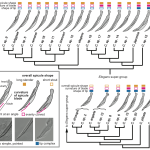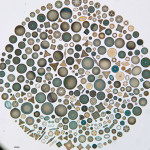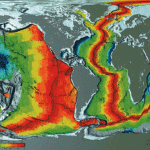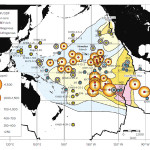This case is short but sweet.
The fossil record is what we scientists have always used to reconstruct past conditions in the ocean. Like any good investigator, we want to know who was there and what they were doing (and who was guilty, darn it!). Deep-sea sediments are hotbeds for microfossils, remnants of teeny animals like forams that leave behind their calcium or silica skeletons. And because the deep-sea is calm, cold and ancient, we can easily peel back layers of mud and glimpse back thousands of years. So we used to be like this:
But now we also have DNA evidence to build our case! A recent study by Lejzerowicz et al. (2013) found that those same deep-sea conditions that preserve microfossils are also pretty awesome at preserving “ancient DNA”. They could identify DNA fragments from some important eukaryotic taxa (forams and radiolarians) in abyssal plain sediments dated at 32,500 years old!!
And you’d think that would make our case even MORE open-and-shut. Buuuut….sometimes our relationship status with DNA is “complicated”. Here’s a side-by-side comparison of fossil and DNA results:
![List of animals found from counting microfossils (left) vs. DNA sequences (right) [Lejzerowicz et al., 2013]](https://www.deepseanews.com/wp-content/uploads/2013/07/Screen-Shot-2013-07-23-at-5.24.54-AM-600x336.png)
My closing argument: both microfossils and DNA are awesome, but neither gives us a complete picture of the ancient oceans.
Reference: Lejzerowicz F, Esling P, Majewski W, Szczucinski W, Decelle J, Obadia C, et al. (2013) Ancient DNA complements microfossil record in deep-sea subsurface sediments. Biology Letters, 9(4):20130283–3.







Dr. Bik, I’ve tried several times and can’t get the chart to show up. I’m just wondering if the organisms that are represented by DNA in ancient deep sea mud, but not by fossils, are mostly or all soft bodied organisms?
I hope there is not too much contamination, DNA tend to have long term preservation problems and also developp some “barrier to replication” (i.e. alterations limiting or preventing the amplification). Anyway, coupling fossil and molecular study like this is really new and sound like a promising approach.
Kris – yes, that was one speculation mentioned in the paper. Hard shell organisms may preferentially preserve as microfossils. I’m not a foram expert so I can’t comment on the body type represented by specific groups.
Crabe – Ancient DNA can indeed be very hard to work with. In this paper they were only looking at short fragments – DNA tends to get more chopped up into shorter pieces as time goes on, preventing PCR amplification of long fragments (e.g. the 400bp fragments we would normally amplify from fresh surface sediment).